I’d like to start doing some dashcam reviews now. I’ve previously reviewed the Itronics ITB-100HD, the dashcam I’ve been using the past few years. The next one I’m taking a look at is the KDLINKS X1, a newer 1080p dashcam that offers some upgrades beyond what I’ve had up to this point including better video quality, as well as some new features I’m not totally sold on for a dashcam like an external GPS antenna and an LCD screen. I chose this one because it has a crazy ton of good reviews on Amazon. Let’s take a look at what the camera is like. You’ll can watch my complete video review above.
I’ve spent the past month getting familiar with the KDLINKS X1, comparing it to my other cameras, and generally seeing what it’s like. Let’s run through the highlights. 🙂
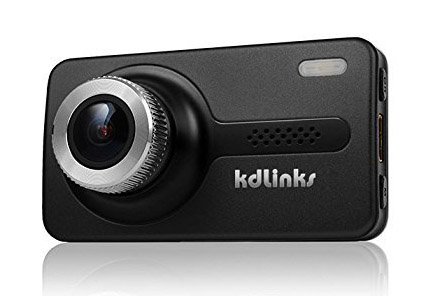
Video Quality
Video quality is pretty good. Things look good during the day and at night. It’s definitely a step up from my last gen ITB-100HD. During the daytime it’s basically on par with my GoPro Hero3+ Black and Hero4 Black, the previous and current top GoPros, so that’s impressive. The image quality may be a hair better at times during the day on the GoPros. The X1 is more processed, meaning they’ve bumped the saturation/color more and there’s heavier sharpening going on. It’s designed to look more appealing straight from the camera. It’s easy to read license plates either way so it definitely works.
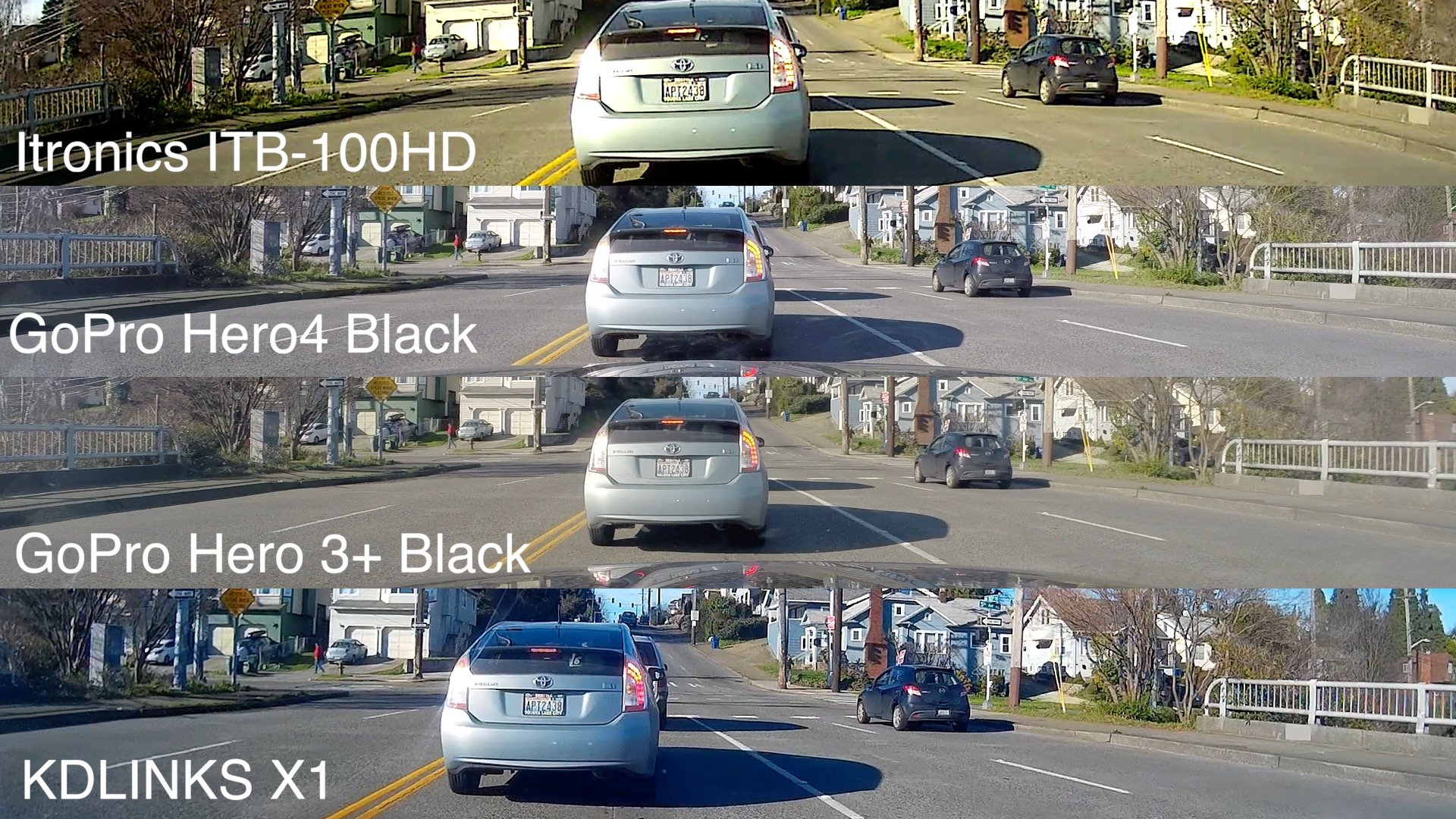
Here’s a couple minutes of sample footage from the KDLINKS X1 in a variety of lighting conditions: day, night, sunny skies, rain, etc.
I think one of the biggest things I see in terms of image quality is that the X1 is better than my GoPros at night, specifically thanks to its WDR feature, or Wide Dynamic Range. This helps it boost shadow detail so you can see more of what’s going on in the shadows at night. Take a look at these comparison clips with the feature turned on and off to see what a difference it makes.
I also like that the camera is pretty good at managing flare. The GoPros tend to flare more when driving into the sun, but the X1 manages that better so it’s better when the sun is up ahead of you.
Audio Quality
The audio quality itself is very good, much better than my previous cameras. It’s easy to hear any conversations recorded in the cabin.
Unfortunately there was this high pitched ringing sound in my audio that was always there. Apparently this isn’t normal, according to other owners I’ve talked to and reviews that I’ve read, so this looked to be an anomaly with just my camera. It should be good in practice.
Case Design

The camera is mostly black with a silver ring around the lens. I prefer an all-black camera to be small and stealthy and unobtrusive. A dashcam is something you always keep in your car and I don’t want something that says “steal me” on it, you know? Usually I wind up even covering any silver trim with black gaffer’s tape to make it more stealthy. This one you can’t really do that because of the silver ring, but otherwise it’s pretty good with a mostly black case.
I like that it’s pretty compact too. The mount means that it does hang down lower than some other cameras so it’s less stealthy than some other cameras I’ve tested, but it’s not too bad otherwise. Here’s how it looks from the outside of my car.
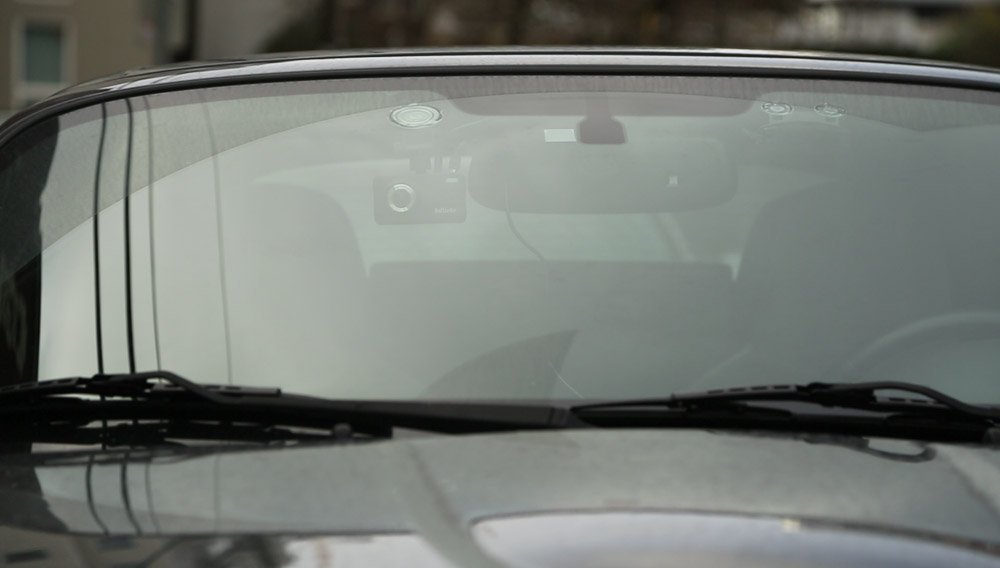
Included in the Package
In the package you get everything you need.
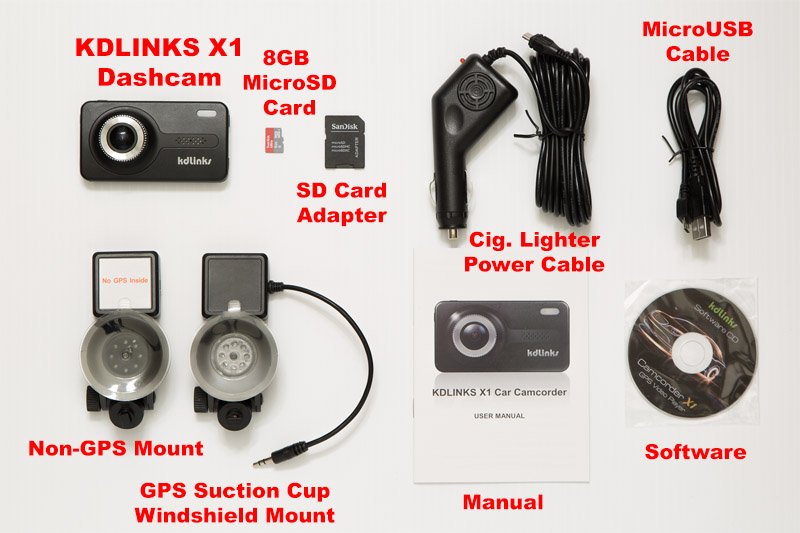
It comes with an 8 gb MicroSD card. That’ll give you about 1 hr 20 min. The camera supports cards up to 32 gb and I’d definitely recommend upgrading. A 32 gb card will give you ~5.5 hours of footage which is much longer to run before it starts overwriting footage. I’d also recommend getting several so that if you take your card out to look at the footage on your computer, it’s so easy to forget to take the card back to your car next time you go out and your dashcam won’t be able to record. This has happened to me so many times so I keep a few extra cards in my glove box now for just this reason. This is the recommended 32 gb card to get.
It also comes with two power cables. One is a long cig. lighter cable, the other is a short MicroUSB cable. You can hardwire the dashcam so it’s permanently installed and not using up your cig. lighter port.
It also comes with two suction cup mounts. The plastic mounts feel kinda cheapy but otherwise hold well. One includes a GPS antenna and plugs into your camera.
LCD Screen
One of the things I was most curious about was the LCD screen on the back. I haven’t needed one on my last camera and was wondering how useful it’d be or if it was a waste of money.
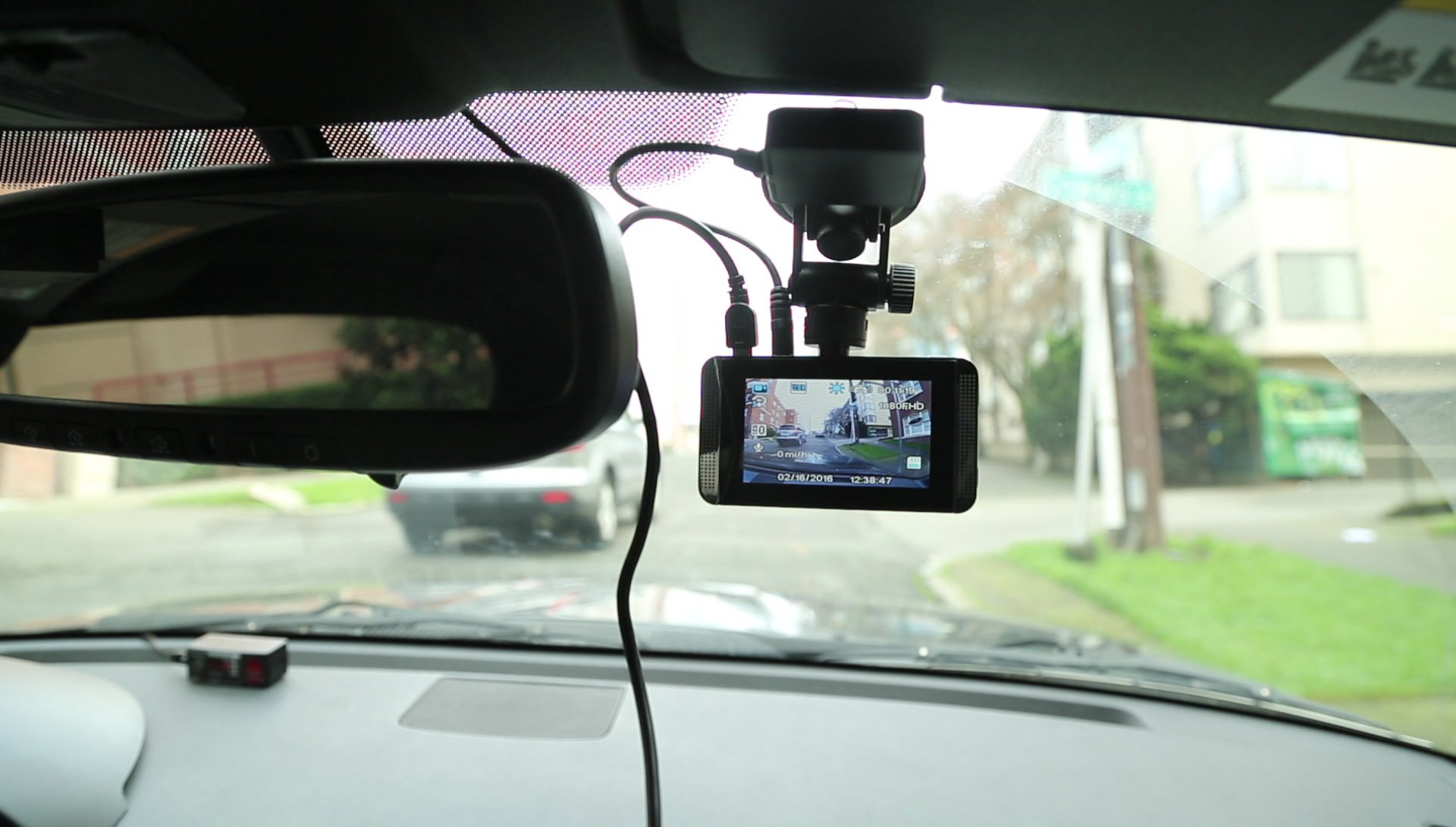
It turns out to be quite handy. You can use it check your framing when you’re initially positioning your camera. With my other cameras it’s really a matter of trial and error. Record a bit, put the memory card in my computer to look at the footage, put the card back in the camera and adjust the camera, and repeat the process a few times. Having an LCD helps avoid this, but once you get it set up, do you need it afterwards?
Well the camera can rotate and point at different angles which can be handy if you want to record something on the side of the road and having the LCD will let you reposition it again afterwards which is nice. You can also use it for changing your camera settings in-camera, going back later to make sure you captured an event, or even showing the police officer the footage if needed.
The camera also has a small battery so you can walk around your car after an accident to record things as needed, or you can use your camera to take pictures. So while you don’t need the LCD really, it does open up some helpful benefits that I hadn’t thought about before.
There’s a bunch of other things I could mention (and I cover them in my review video up top), but these are some of the highlights.
Software
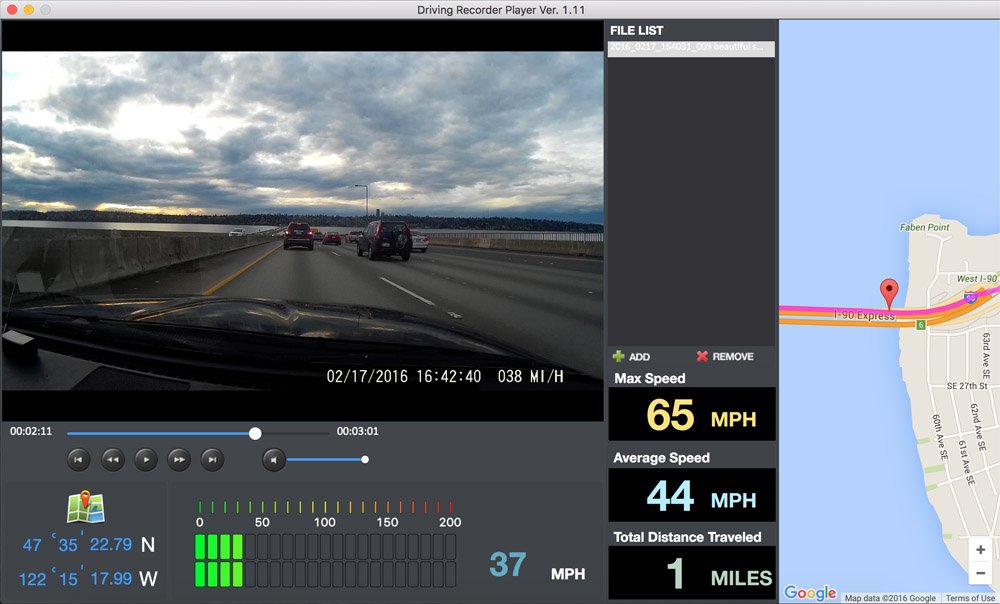
The KDLINKS X1 has software available for both Windows and Mac. The interface is pretty clean and simple. Given that you configure the camera through the camera itself and not the software, there’s not as much needed in the app.
The app lets you play back your footage, see your average speed and max speed for that clip, and show you not only where you are at that point in time, but the entire length of road that you traveled during that clip. (If you record in 3 minute chunks, it will show you just that 3 minute chunk.)
I did notice that you can only load in one file at a time which is a little annoying if you’re trying to load in a bunch of files at a time. However, I like the fact that the GPS information is all embedded in the movie file itself. This means that you have one file per video clip, not two (one for the video, the other for the GPS information). This is easier to manage over time and it doesn’t confuse the video player if you want to rename the video files to something more helpful. In other programs if you rename the video file but not the GPS file, the software doesn’t understand how to link them and so you don’t get your GPS data. With this because it’s just one file, it’s better to work with on your computer. I like that.
Any Issues?
From what I understand, there’s other cameras that can give you similar video quality for less money, so if you don’t need the features like the LCD or GPS, you can get a simpler camera that will do the same key feature of recording your drive for less money.
There was the audio issue I had, but it sounds like that was just a fluke on my camera.
It only supports 32 gb cards and I wish it supported larger cards so I could get more than 5.5 hours of recording time.
The camera doesn’t have a parking mode feature. You can run it while you’re parked (use something like a Power Magic Pro so you don’t drain your car battery) and it has a motion sensor to record when someone walks or drives by, but it misses the first few seconds of recording and causes issues when you’re actually driving. In stop and go traffic, your camera will continually stop recording which is kind of annoying. I wish there was a better way to enable/disable that feature or a better way for it to work automatically. I show these issues in the review video up top.
The camera gives you a short visual warning when you forget to put a memory card in your camera but no audio warning. Without an audio warning, if you take your card out and forget to put it back in, it’s easy to drive off without having your camera recording. I wish it had an audio beep to let you know that you need to put a card in. You won’t always look at the camera’s screen. In fact you probably almost never will since it’s designed to be something that you put up and let run in the background. If you get this camera, make sure you remember to put a card back in later after you take it out.
Conclusion
It’s a pretty good camera all around. You’ve got good video and audio quality, the GPS is handy, I like the screen and being able to rotate the camera, I like the compactness, I like that the status LED on the back lets you know the camera is on and recording without being too obtrusive, I like that it can automatically start up and shut down with your car, and that it costs less than $200.
Just make sure that you always have a memory card in it (pick up a couple extras) and it is a very good choice.
You can purchase the KDLINKS X1 from Amazon here.
| This website contains affiliate links and I sometimes make commissions on purchases. All opinions are my own. I don’t do paid or sponsored reviews. Click here to read my affiliate disclosure. |


3 comments
kdlinksx1–I prefer a capacitor type, also a h.204 compression ratio.
i prefer a capacitor, 64 or 128 card, h.264 compression ratio.
Author
Me too. Good points. 🙂